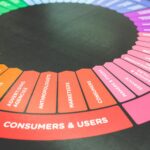Understanding Consumer Behavior
Definition and Importance
The consumer behavior process refers to the study of how individuals, groups, or organizations select, buy, use, and dispose of goods, services, ideas, or experiences to satisfy their needs and desires. Understanding this process is crucial for businesses as it helps them create effective marketing strategies, improve customer satisfaction, and foster brand loyalty.
Key Concepts and Theories
Several key concepts and theories underpin the consumer behavior process. The Theory of Planned Behavior explains how attitudes, subjective norms, and perceived behavioral control influence consumer intentions and actions. Maslow’s Hierarchy of Needs outlines how consumers prioritize their needs, from basic physiological requirements to self-actualization. These frameworks help businesses predict consumer decisions and tailor their offerings accordingly.
Factors Influencing Consumer Decisions
Psychological Factors
Psychological factors play a crucial role in the consumer behavior process. These include perception, motivation, learning, and attitudes. Consumers’ perceptions of a product can significantly influence their purchasing decisions. Motivation drives consumers to fulfill their needs and desires, often guided by Maslow’s Hierarchy of Needs. Learning from past experiences and forming attitudes towards brands also shape consumer choices.
Social and Cultural Influences
Social and cultural factors are equally impactful in the consumer behaviour process. Family, friends, and social media networks can sway consumer decisions through recommendations and shared experiences. Cultural norms and values also dictate acceptable purchasing behaviors and preferences. For instance, a culture that values sustainability will likely influence consumers to choose eco-friendly products.
Personal and Situational Elements
Personal factors such as age, occupation, lifestyle, and economic status can affect the consumer behavior process. For example, younger consumers might prioritize technology and convenience, while older consumers may focus on quality and reliability. Situational elements, including the physical environment and time constraints, can also influence purchasing decisions. A well-designed store layout or a limited-time offer can prompt immediate purchases.
- Psychological Factors: Perception, Motivation, Learning, Attitudes
- Social and Cultural Influences: Family, Friends, Social Media, Cultural Norms
- Personal and Situational Elements: Age, Occupation, Lifestyle, Economic Status, Physical Environment, Time Constraints
Stages of the Consumer Decision-Making Process
Need Recognition
The consumer behavior process begins with need recognition. This stage occurs when a consumer identifies a gap between their current state and a desired state. This gap can be triggered by internal stimuli, such as hunger, or external stimuli, like advertising. Recognizing this need is crucial as it sets the entire decision-making process in motion.
Information Search
Once a need is recognized, consumers embark on an information search. They seek out data to make informed decisions, utilizing both internal sources (memory) and external sources (internet, friends, and family). The extent of this search depends on the complexity of the purchase and the consumer’s familiarity with the product.
Evaluation of Alternatives
During the evaluation of alternatives stage, consumers compare different products or services to determine which best meets their needs. They assess various attributes such as price, quality, and features. This evaluation helps narrow down choices, making the decision process more manageable.
Purchase Decision
The purchase decision stage is where the consumer selects a product or service from the evaluated alternatives. Factors influencing this decision include brand loyalty, promotional offers, and perceived value. This stage culminates in the actual transaction, where the consumer commits to buying the product.
Post-Purchase Behavior
After the purchase, consumers enter the post-purchase behavior stage. They evaluate their satisfaction with the product, which can lead to repeat purchases or brand switching. Positive experiences foster loyalty, while negative experiences may result in returns or negative reviews. This stage is critical for businesses aiming to build long-term customer relationships.
Current Trends in Consumer Behavior
Digital Technology’s Impact
Digital technology has revolutionized the consumer behavior process. With the rise of e-commerce and mobile shopping, consumers now have unprecedented access to products and services. This shift has led to more informed purchasing decisions, as consumers can easily compare prices, read reviews, and access detailed product information online. Businesses must adapt to these changes by enhancing their digital presence and offering seamless online shopping experiences.
Online Shopping Patterns
Online shopping patterns have evolved significantly. Consumers increasingly prefer the convenience of shopping from home, leading to a surge in e-commerce. This trend is driven by factors such as time-saving, a wider range of choices, and the ability to shop 24/7. Companies need to focus on optimizing their websites for user experience and ensuring secure payment options to cater to this growing demand.
Demand for Transparency and Eco-Friendliness
Modern consumers are more conscious of the ethical and environmental impact of their purchases. There is a growing demand for transparency in business practices and a preference for eco-friendly products. Brands that prioritize sustainability and openly communicate their efforts in this area are more likely to gain consumer trust and loyalty.
Personalized Consumer Experiences
Personalization has become a key trend in the consumer behaviour process. Consumers expect tailored experiences that cater to their individual preferences and needs. Utilizing data analytics and AI, businesses can offer personalized recommendations, targeted marketing, and customized products, enhancing customer satisfaction and fostering brand loyalty.
Psychological Influences on Consumer Behavior
Perception and Motivation
Perception and motivation are critical elements in the consumer behavior process. Perception refers to how consumers interpret information and form a view of products or services. This can be influenced by sensory inputs, past experiences, and individual expectations. Motivation, on the other hand, drives consumers to fulfill their needs and desires. Understanding these psychological factors helps businesses tailor their marketing strategies to better align with consumer motivations and perceptions.
Attitudes and Beliefs
Attitudes and beliefs significantly shape the consumer behavior process. Attitudes are learned predispositions to respond favorably or unfavorably to a product or service. They are formed through experiences and can be influenced by marketing efforts. Beliefs are convictions that consumers hold about a product’s attributes and benefits. Together, these factors determine how consumers evaluate and choose between alternatives, making them essential considerations for effective marketing.
Social and Cultural Factors
Social and cultural factors significantly shape the consumer behavior process. Family and friends often serve as primary influencers, guiding purchasing decisions through shared experiences and recommendations. As one consumer noted, “I always check with my friends before buying a new gadget.”
Social media also plays a crucial role, with platforms like Instagram and Facebook providing a space for peer reviews and influencer endorsements. Cultural norms and values further impact consumer choices, dictating preferences and acceptable behaviors within specific communities.
- Family and Friends: Influence through shared experiences and recommendations.
- Social Media Influence: Platforms for peer reviews and influencer endorsements.
- Cultural Norms and Values: Dictate preferences and acceptable behaviors.
Personal and Situational Influences
Demographics and Lifestyle
Demographics and lifestyle significantly shape the consumer behavior process. Age, gender, income, education, and occupation influence preferences and purchasing power. For instance, younger consumers may prioritize technology and fashion, while older demographics might focus on health and financial security. Lifestyle choices, such as hobbies and interests, also guide buying decisions.
Situational Contexts
Situational contexts, including physical environment and timing, impact the consumer behaviour process. A consumer’s mood, weather conditions, or store ambiance can affect their purchasing decisions. Additionally, time constraints or special occasions, like holidays, often lead to impulse buys or specific product choices.
- Physical Environment: Store layout, lighting, and music.
- Timing: Seasonal sales, holidays, and time of day.
Impact of Digital Technology on Consumer Behavior
E-commerce and Mobile Shopping
Digital technology has revolutionized the consumer behavior process, particularly through the rise of e-commerce and mobile shopping. Consumers now enjoy the convenience of purchasing products anytime and anywhere. This shift has led to an increase in impulse buying and a preference for online over in-store shopping.
Key benefits include:
- 24/7 availability of products and services
- Ease of price comparison across different platforms
- Personalized shopping experiences through data analytics
Social Media and Consumer Engagement
Social media platforms have become integral to the consumer behaviour process. They serve as both a source of information and a space for consumer engagement. Brands leverage social media to build relationships, gather feedback, and influence purchasing decisions.
Key impacts include:
- Enhanced brand visibility and reach
- Real-time interaction with consumers
- User-generated content influencing peer decisions
Online Reviews and Recommendations
Online reviews and recommendations play a crucial role in the consumer behavior process. Consumers often rely on reviews to make informed decisions, making them a powerful tool for businesses to build trust and credibility.
Key aspects include:
- Increased transparency and trustworthiness
- Influence on purchase decisions through peer reviews
- Feedback loop for continuous improvement
Consumer Research Methods
Surveys and Questionnaires
Surveys and questionnaires are essential tools in the consumer behavior process. They allow businesses to gather quantitative data on consumer preferences, attitudes, and behaviors. These methods are cost-effective and can reach a large audience, providing valuable insights into consumer trends and decision-making processes.
Focus Groups
Focus groups offer a qualitative approach to understanding the consumer behavior process. By engaging a small group of participants in discussions, businesses can gain deeper insights into consumer motivations, perceptions, and emotional responses. This method helps uncover nuanced opinions that surveys might miss.
Observational Studies
Observational studies involve watching consumers in real-world settings to understand their behavior. This method provides an unfiltered view of the consumer behavior process, capturing genuine interactions with products and services. It is particularly useful for identifying pain points and areas for improvement.
- Surveys and Questionnaires: Quantitative data collection.
- Focus Groups: Qualitative insights.
- Observational Studies: Real-world behavior analysis.
FAQs: Consumer Behavior Process
What Are the Main Stages of the Consumer Decision-Making Process?
The main stages include need recognition, information search, evaluation of alternatives, purchase decision, and post-purchase behavior.
How Do Psychological Factors Influence Consumer Behavior?
Psychological factors such as perception, motivation, attitudes, and beliefs significantly shape consumer choices and actions.
What Role Do Social and Cultural Factors Play in Consumer Decisions?
Social and cultural factors, including family, friends, social media, and cultural norms, heavily influence consumer decisions.
How Has Digital Technology Changed Consumer Behavior?
Digital technology has revolutionized consumer behavior through e-commerce, mobile shopping, social media engagement, and online reviews.
What Methods Are Used to Research Consumer Behavior?
Common methods include surveys, questionnaires, focus groups, and observational studies.


